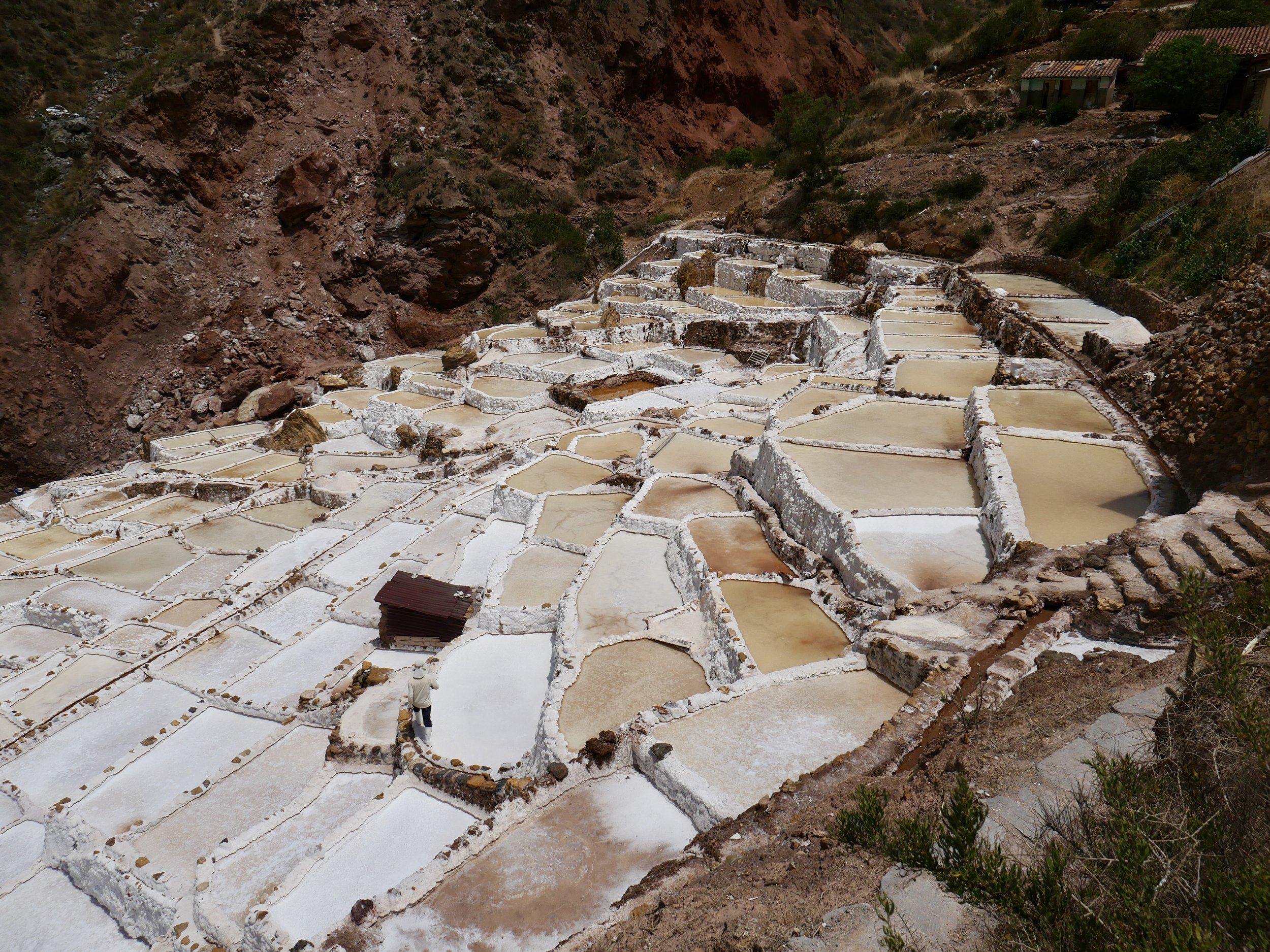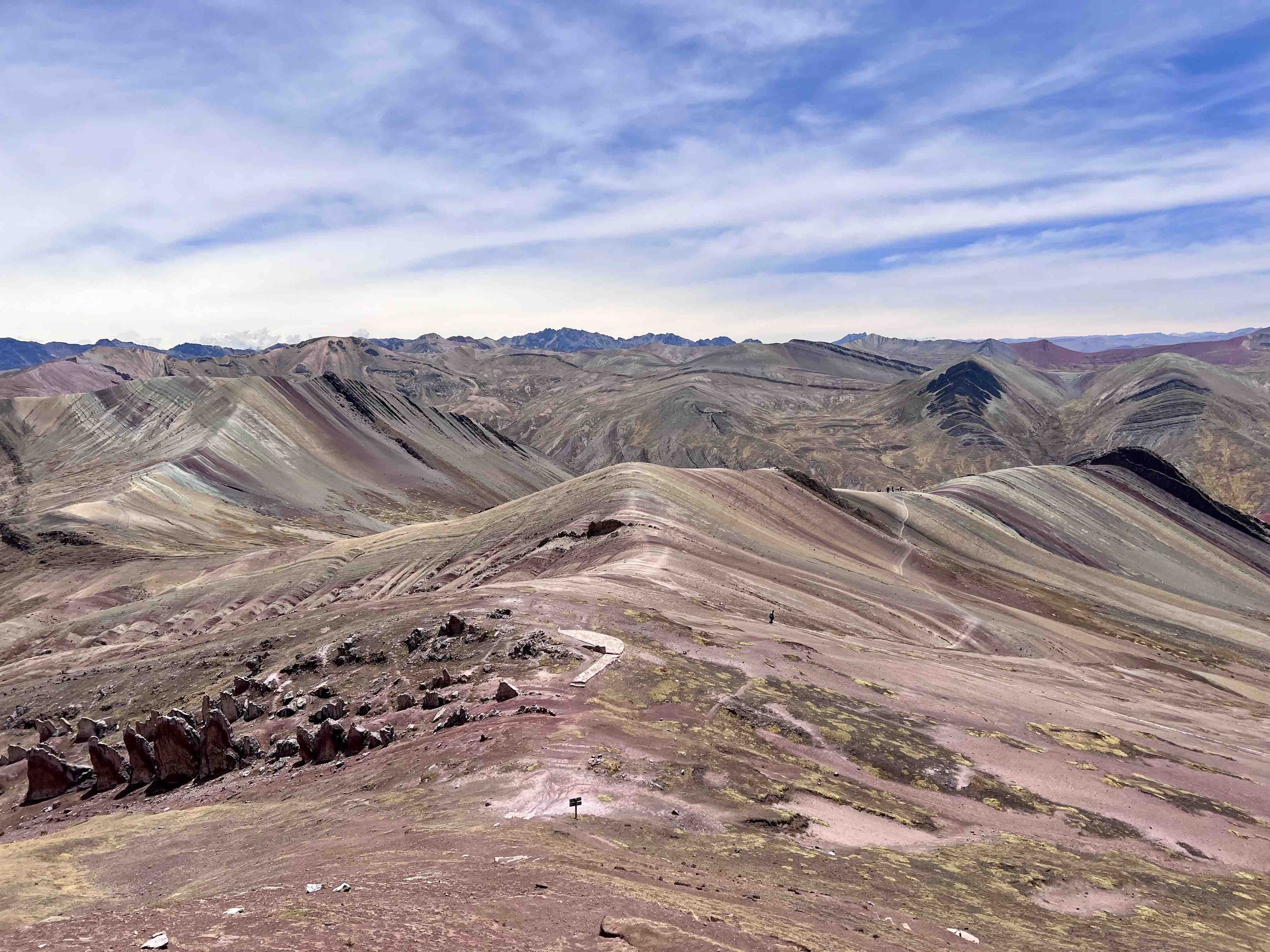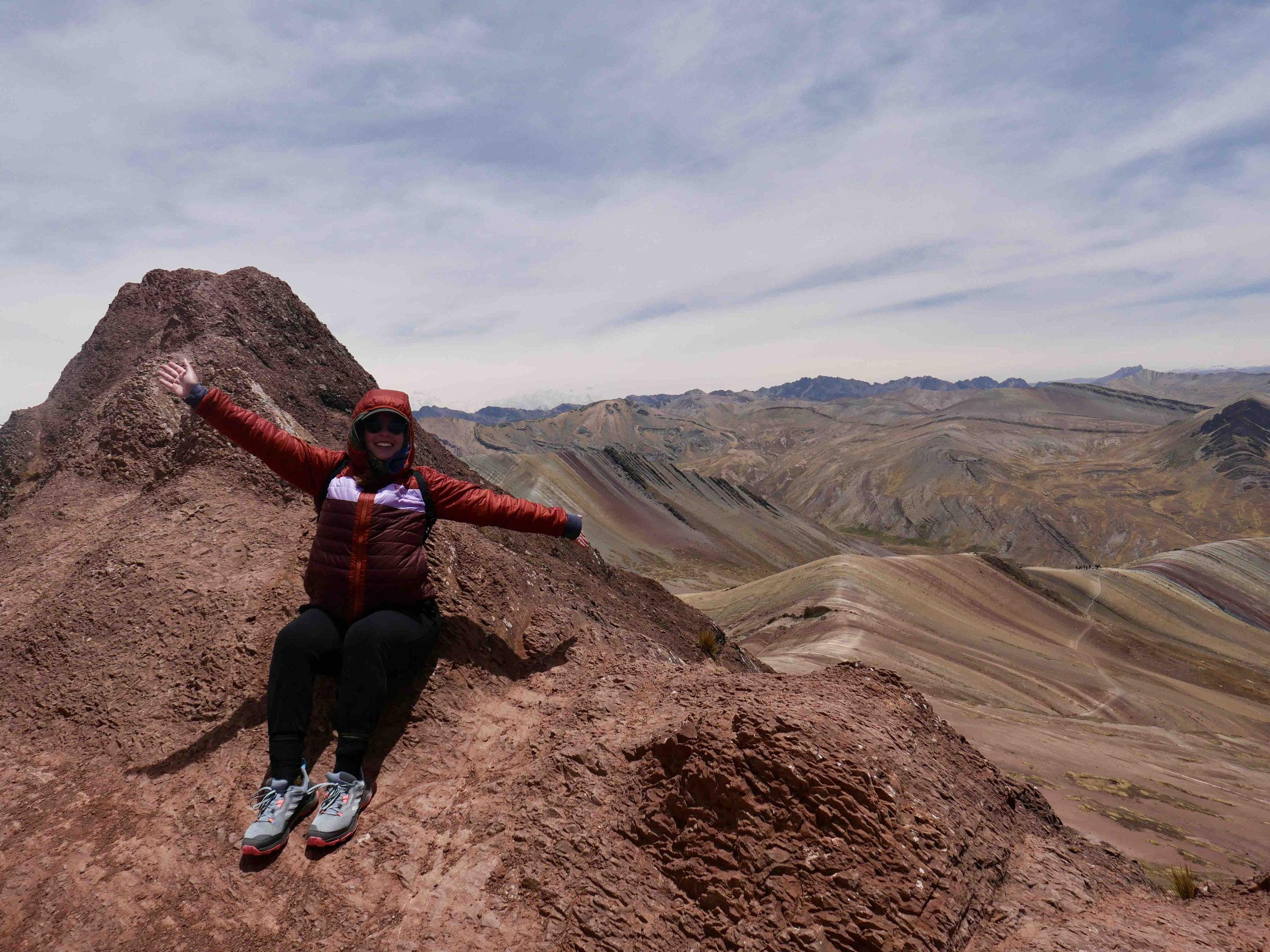Machu Picchu, Sacred Valley, and Palcoyo Mountain, Peru
Days 34-37
December 2, 5-6
If you, like me, plan very last minute and are worried you won’t make it to Machu Picchu without pre-booking months in advance, don’t worry. You will get there and to many of the other amazing destinations from Cusco.
From my hostel in Cusco, I signed up for a two day Sacred Valley and Machu Picchu tour which included entrance to the park and a train ticket to and from Aguascalientes, the town at the base of the Machu Picchu mountain.
In the Sacred Valley, our group visited traditional weavers. We learned about harvesting alpaca and lama wool and the plants used for natural dyes.
Then we went to the sacred sight of Moray where the Incas had built an elaborate farming plot - it looked like a huge amphitheater.
Then to the ancient Inca salt mines of Marasal where I bought some salt for home - small gifts are great when traveling light.
Onwards to the Temple of the Sun ruins where we wondered how in the world the Incas built these huge stone buildings with stone mined from other mountains. Truly a feat!
We headed to Ollantaytambo where I boarded a train to Aguascalientes. I stayed the night and walked up to Machu Picchu in the morning.
The bridge at the start of the Machu Picchu trek.
It was hot and sunny, but the leaves provided welcome shade. It was not crowded, and I walked alone most of the time. In response to numerous warnings I received of evil biting no-see-’ems, I doused myself in bug spray and made it out with only one bite!
The thousands of steps ensured that I was profusely sweating by the time I reached the top.
Contemplating why I walked and wondering how much longer…
Although I was meant to meet a guide at the top, we never found each other. I entered the park alone. As soon as I got to the highest part, the skies opened and thunder boomed through the mountains.
I wandered through the ancient city alone, asking random people to take my picture at different spots.
The city was quite magnificent and I craved to learn more about its history.
I heard that the Incas barely lived there. A theory exists that the city was built to be found hundred of years later to teach people about the Incas.
Lamas still live in the city, as they always have.
The Spanish never found Machu Picchu. The only destruction is erosion caused by vines.
A temple facing erosion.
On a different day, also out of Cusco, I took a day trip to the Palcoyyo Rainbow Mountains.
These colorful mountains have only recently, in the past decade, made it onto “must see” lists.
Since climate change has caused the glacier ice on these mountains to melt, the oxidization between the air and the minerals of the earth have revealed a spectacular stratification of earth-tone colors.
While it occasionally snows, the surface is now almost always visible. Without fresh water from the glaciers, people living in the valleys face water scarcity and will likely become climate refugees as droughts intensify.
There are two well-known places from which to see these colorful mountains. The more popular one requires a two-hour hike on mainly sandy trails to the well-visited summit where one snaps a picture and then immediately comes back down.
I chose the other mountains because the trek is easier and the views more diverse. I felt emotional while walking - both mourning the rapid changes of the Earth and grateful to see such beauty.
We reached a maximum altitude of 4,900 meters - the highest I’ve ever been.






















